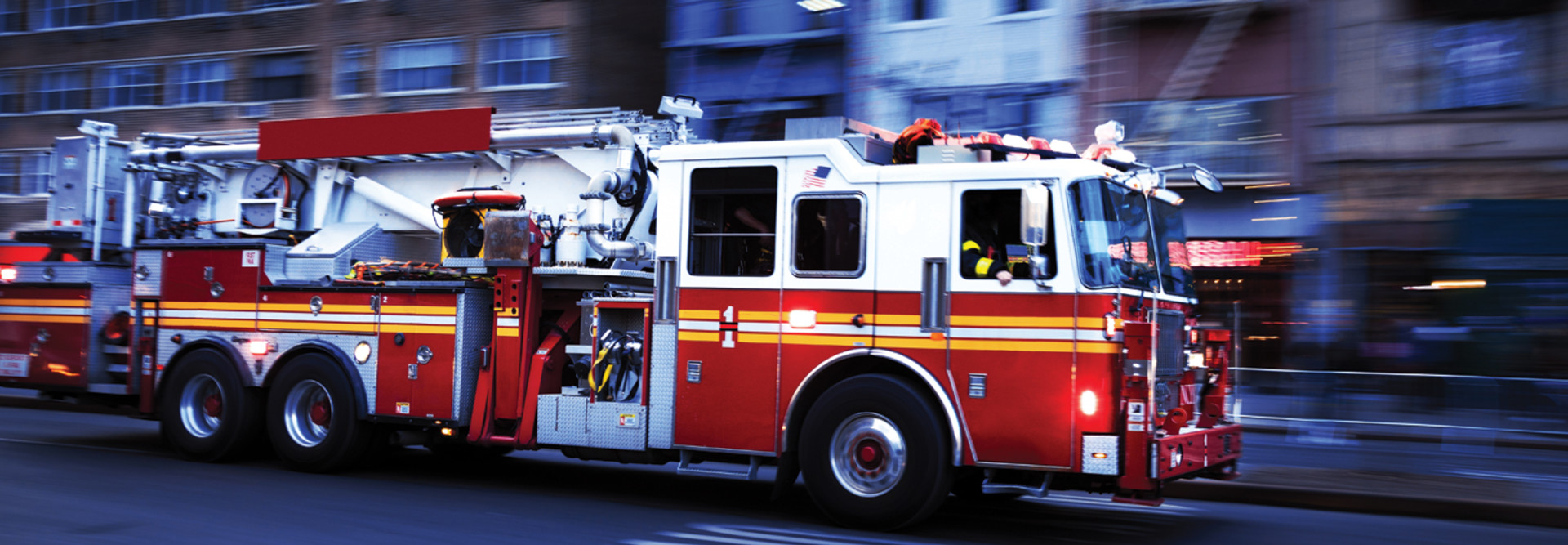Building Intelligence Data, IoT Help in Urban Firefighting
The National Fire Incident Reporting System is a system used by U.S. fire departments to “report fires and other incidents to which they respond and to maintain records of these incidents in a uniform manner.” It is one element of information fire departments use in responding to fires. However, there are reams of data that fire departments could be using.
“Many fire departments already have a computer system using the Internet of Things (IoT) accessing data platforms to manage NFIRS reports, fire inspections, vehicle maintenance, work group schedules, etc.,” Fire Engineering reports.
However, the publication notes, many fire departments lack “detailed building intelligence data for alarm response” and often respond to fires with only basic information (often held in paper binders) about the location. Smart building intelligence platforms can give fire chiefs and incident commanders information on when and how buildings have been altered, local water department information on whether fire hydrants are out of service, transportation department information on street closures and more.
Using such platforms, incident commanders can “access cloud data of a particular building (building management system) and fire protection system in real time, have the prepared battle plan, and control an electronic command board,” Fire Engineering reports.
That data can then be passed on to fire response units and local fire companies. Additionally, an electronic building intelligence card database can be created to help plan future responses to fires. Such an IoT platform, the publication notes, can share building data to users’ smartphones and tablets. “A real-time IoT citywide tracking domain solution can monitor temporary fire protection system impairments, alteration/renovation projects, and query hazmat quantities/locations, building structural components, etc.,” Fire Engineer reports.
The upshot is that such information can help fire departments create more dynamic fire battle plans. The Boston Fire Department has been using building intelligence data for several years now to fight fires. “Firefighters and dispatchers can now easily view permitting, inspection, code violation, and hazard data, allowing them to make better decisions and improve firefighter safety,” the Data-Smart City Solutions blog says.
READ MORE: Find out how augmented reality can aid firefighters.
Cameras Give Fire Departments a View into Wildfires
Wildfires, particularly in California, have grown larger and more complex over the past several years. State and local fire departments need as much help as they can get to respond to, manage and extinguish blazes, which can spread across hundreds of thousands of acres.
One advantage firefighters now have is the ALERTWildfire network, created via a consortium of three universities — the University of Nevada, Reno; the University of California, San Diego; and the University of Oregon — which gives fire departments access to state-of-the-art pan-tilt-zoom fire cameras and associated tools, the group says.
ALERTWildfire is designed to help firefighters discover, locate and confirm when wildfires start, then “quickly scale fire resources up or down appropriately” and “monitor fire behavior through containment.” During firestorms, the situational awareness the camera networks provide can help with evacuations. The cameras can also help fire departments monitor contained fires to ensure they are fully out.
In 2018, the consortium decided to install cameras on existing third-party microwave networks, build larger virtual networks and produce regional coverage, quickly. Wireless towers, towers used by state and county services and other private point-to-point communication infrastructure were outfitted with fire cameras and associated equipment to potentially allow 100 or more fire cameras to be installed in a single season. The data and video streams from those cameras are then fed back to the Nevada Seismological Laboratory at the University of Nevada, Reno, which originally funded the ALERTWildfire system.
Ryan Sommers, fire chief of the North Lake Tahoe Fire Protection District, tells Nevada Today that the ALERTWildfire system works because it gives first responders and firefighters the advantage of sizing up a smoke column or fire “before we arrive.” It also aids dispatch centers.
“They can bring the smoke column into the camera’s view, and they can make appropriate adjustments to the response level with a little bit more intelligence and a little bit more visual aid, versus just receiving and talking to somebody on the phone. … It’s a little more reassuring to me on a personal level and on a company level,” to see these fires in the camera, Sommers says.
There are other emerging technologies, such as artificial intelligence, that are being used to spot wildfires quickly and predict their path.
According to Government Technology, California’s wildfire crises prompted Gov. Gavin Newsom to sign an executive order with the goal of providing state firefighters with state-of-the-art technology to defeat future blazes before they reach devastating proportions. Newsom announced the first two contracts awarded for the “Wildfire Innovation Sprint.”
Technosylva will create a prototype that can predict the path of a wildfire in real time by considering vegetation, weather and topography, the release states. The proof of concept will use a cloud-based modeling service that will help fire, law enforcement and government officials update the public, deploy emergency notifications and begin evacuations. The state also selected Northrop Grumman, which has been charged with creating an early wildfire ignition detection system, which will use “remote sensors in the sky” that interface with computer-aided dispatch systems.
Fire departments have always had difficult missions, and those have grown more complex and dangerous over time. Technology can help ease the burden.
This article is part of StateTech's CITizen blog series. Please join the discussion on Twitter by using the #StateLocalIT hashtag.












